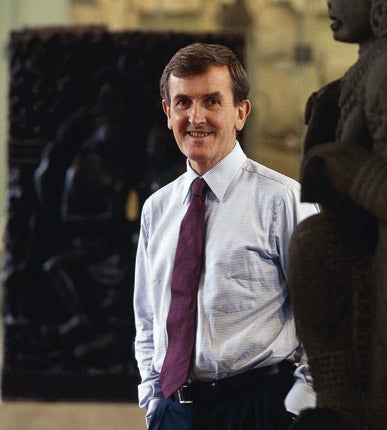A History of the World in 100 Objects, Radio 4, Monday-Friday
Two million years of human ingenuity measured out in flukes and treasures

It'll make a good quiz question: what began with the mummy of Hornedjitef and a Tanzanian chopping tool, and ended with a credit card and a solar-powered lamp?
A History of the World in 100 Objects, of course, curated and presented by Neil MacGregor, director of the British Museum, where all the objects reside. The series came to a conclusion on Friday, and in a week when the BBC took a big hit in the spending review, it was a timely reminder of the kind of glorious project that would die out if the corporation were to be fatally compromised.
I can't pretend to have listened to every instalment of this mind-expanding epic – but then they're all available on the superbly appointed website (superb, that is, apart from the dancing graphics, which send old duffers like me cross-eyed). You can sort objects by age, colour, material or size, the last category ranging from "Tiny", exemplified by a Stone Age thumbnail scraper found in the Cotswolds, to "Massive", such as the Bronze Age timber circle unearthed on the Norfolk coast. It's a fabulous resource to which I thoroughly recommend a visit.
The final week of the series was typical of its kaleidoscopic and authoritative nature. On Monday there was a 1921 porcelain plate from Russia, propaganda for the new world the Bolsheviks thought they were bringing into being; the great Marxist historian Eric Hobsbawm was called upon to assess its significance. Tuesday was one David Hockney's 1966 etchings inspired by the gay love poems of Cavafy, the artist himself on hand to place it in the context of the advance of gay rights in that decade of social and political upheaval.
On Wednesday, the former secretary general of the United Nations, Kofi Annan, a man steeped in the lore of conflict resolution, examined the extraordinary Throne of Weapons, a chair created out of guns. It's a product of the Arms into Tools project in Mozambique that's taken 600,000 decommissioned firearms, relics of the country's 30 years of bloodshed exchanged for useful stuff like hoes and sewing machines, and transformed them into startling works of art.
As MacGregor promised at the start of the series, it's been "a story of endless connections", and surveying the throne led Annan to try to explain why independence has brought so many problems to African countries. He recalled his time in Sierra Leone, where he saw eight-year-olds "carrying Kalashnikovs almost as tall as they were, and trained to kill". We need to ask ourselves, he said, "how did we get here?" Good question. And 100 Objects is the perfect place to begin looking for an answer.
Join our commenting forum
Join thought-provoking conversations, follow other Independent readers and see their replies
Comments